
Let’s Settle This Once and for All
So, picture this: You finish a workout, your hair’s sticking to your forehead, and you reach for your trusty water bottle. But … have you ever wondered (like, really wondered) how much water is in a water bottle in ml? People toss out numbers—500, 750, 1000—but does anyone ever pause and check? Or is that just me?
Let’s ditch the guesswork. If you’re a person who wants to drink more water for energy, better skin, or just to not have dry lips all day … you’re in the right place. You’ll get the real scoop on bottle sizes, tips for everyday hydration, and a few quick stories about hydration wins (and fails) from my own messy, fitness-filled life.
Wait, Is 500 mL the Norm?
You’ve seen them everywhere—those grab-and-go disposable bottles, with the crinkly label sliding up as you drink. Newsflash: the single-use bottles you spot at the store are almost always 500 mL. That’s 16.9 ounces, if you’re more of an “ounces” person (why this size? It’s just enough to satisfy a thirst, but not so big you feel like you’re hauling around a fire extinguisher) according to research on everyday water bottle sizes.
Reusable bottles are a little wild—they come in almost every size. I have one that holds a whopping 1.2 liters (hello, arm workout). But honestly, if you just want to know how much water is in a plastic water bottle, 500 mL is your answer. That’s the “normal” store-bought bottle most of us use to track water intake during gym sessions, soccer games, or afternoon commutes.
Does Size Really Matter for Hydration?
Okay, let’s pause. Why does anyone care, really? Because it’s super easy to lose track of how much you’re drinking—especially if your gym bottle is purple and your desk bottle is blue and you have zero clue how many mLs either holds. Been there.
Knowing the typical volume helps you hack your habits. Want to drink 2 liters a day? That’s just four standard bottles. Simple. Want to try those popular “8 glasses a day” hydration challenges (which, by the way, aren’t always rooted in hard science, but they’re a decent starting point)?
Real-Life Moment: The Case of the Tiny Bottle
Last summer, I hiked with a friend who packed—get this—a single 250 mL bottle for a six-mile hike. Three miles in, she’s rationing sips like we’re crossing the Sahara. Not pretty. Lesson: Check bottle size before the adventure, always. Even if the label says 500 mL, fill it up … and maybe bring a backup.
Sizes: Why So Many Choices?
If you’re confused by all the numbers on bottles at the store—you’re not alone. Let’s break down the common ones:
| Bottle Type | Volume (mL) | Volume (Ounces) | Perfect For |
|---|---|---|---|
| Tiny/Travel | 250–350 | 8–12 | Kids, purse, short walks |
| Standard Plastic | 500 | 16.9 | Daily use, gym bag, lunchbox |
| Stainless Steel/Big Reusable | 750–1200 | 25–40 | Yoga, hiking, all-day hydration |
| XL (Serious Business) | 2000+ | 68+ | Day-long road trips, marathoners, that one friend who’s always thirsty |
The reality? Most folks stick with 500 mL for a reason: easy to carry, not too heavy, fits in your car cup-holder. (And if you forget your bottle on the roof of your car and drive off—yeah, it’s usually a 500 mL that bounces down the street. True story.)
But What About Those Empty Bottles?
Ever refilled an empty plastic bottle and thought, “Hmm, does it hold the same as before?” If you’ve wondered how much water is in a water bottle in ml empty, trust the markings. As long as it was a 500 mL bottle when you bought it, it’ll be a 500 mL bottle after you refill it—unless you squished it into origami at the bottom of your gym bag. (We’ve all done it. No shame.)
And—just putting it out there—refilling that single-use plastic bottle is handy, but if you want to make your hydration more eco-friendly? Switch to a big, reusable bottle. Good for the wallet, and the planet.
Why Knowing Your Bottle’s Size Actually Matters
Okay, let’s talk real health stuff. If you want to track your water intake, you have to know the size of your bottle. Otherwise, it’s just wild guesses and probably some accidental underhydration going on (headaches, anyone?).
If you’re aiming for the usual “2 liters a day” advice? That’s just four 500 mL bottles. If you really want to go for the “gallon a day” challenge (that’s for the adventurous, or the super athletic, or the eternally thirsty) … you’d be sipping from about 7.5 bottles. Math is helpful sometimes, even if you’re just eyeballing it.
Quick Math: Converting mL and Ounces
Confused by ounces and milliliters (ml)? Here’s a quick hack: 1 ounce = about 30 ml. Most standard bottles at the store list both. So, a 16.9-ounce bottle? That’s your classic 500 ml.
So if someone recommends “Drink 64 ounces”—just do: 64 x 30 = 1,920 ml, or a bit less than four full large bottles. (I know, numbers can be messy. I always round up and carry an extra.)
The Perks of Tracking Your Bottled Water
Maybe you’re a gym goer trying to recover after leg day, or someone just powering through meetings. Tracking how much water you actually drink helps. Less bloating, more focus, fewer junk food cravings (yup—sometimes you’re just thirsty, not hungry).
If you want to geek out: Keeping track of how many times you refill your 500 mL bottle is like scoring points in a hydration game. I used to make a tally with a dry-erase marker on my big desk bottle. The satisfaction of hitting “four” by afternoon made hydration feel oddly, positively competitive.
Hydration Hack: Mark Your Bottle
One goofy thing that worked for me when my mood was low? Drawing little marks on the side of my bottle each time I refilled it, turning it into a “level-up” challenge. Not only did I drink more, but every extra fill felt like a tiny win—especially handy around that 3pm, brain-fog wall.
Give it a try: If you’re using a classic disposable 500 mL, just make a tally on a sticky note … climb your way to 2L or more by dinner.
Big Bottles vs. Small Bottles: Which Should You Pick?
It depends on your habits. Are you out and about all day? A jumbo 1-liter or 40-ounce bottle means fewer trips to the refill tap (but, heads up—it’s heavy). If you’re at your desk? Two 500 mL bottles, swapped midday, keeps things light and easy to track.
If you travel a lot (hello, airport security!), 350 mL or even 250 mL fits easily in a bag. For long runs or hot summer days, I do love a big 750 mL bottle, tucked into a backpack. Just… try not to leave it behind. Learned that one the hard way (moment of silence for my beloved stainless-steel friend, lost during last year’s park picnic). If you dive into more details, how much water is in a plastic water bottle gives you the full size rundown.
Adults vs. Kids (Or, Why My Niece Only Gets the Tiny Bottle)
If you’ve got little ones around, you know a 500 mL bottle is a two-handed job. For kids, 250–350 mL is plenty—they get overwhelmed by anything bigger, and you end up with mystery spills and wet backpacks. Grown-up size? Go as big as comfort (and arm strength) allows. It’s your call.
Why “How Much” Isn’t the Only Question
Knowing how much water is in your bottle is just the start. There’s empty, there’s full … but also, there’s are you actually drinking it? Sounds silly, but plenty of us are “bottle carriers,” not “bottle drinkers.” The trick is turning that number—500 mL, 750, whatever—into an everyday win instead of a forgotten prop.
This is where making hydration more emotional (and less clinical) helps: Tie it to how you feel at the gym, after a long walk, or even during Netflix evenings. Track your mood and your bottle—are you less grumpy? Is your energy better?
Group Challenge (A Little Social Pressure Helps!)
This might sound strange, but my family had a “water challenge” last winter. Everyone kept a 500 mL bottle on the kitchen counter. We made a line with masking tape and tallied every full bottle with a marker. Winner got first dibs on homemade muffins. Turns out, competitive hydration is hilarious and genuinely keeps you on track.
You could try this at work, in locker rooms, or even just with text check-ins. (Friendly peer pressure: it works.)
From Bottle to Body: What Does It Do For You?
Drinking enough water isn’t just a wellness cliché. We’re talking fewer headaches, smoother digestion, glowing skin (yes, really), and even better workouts. Consistency is key—and knowing how much water is in your water bottle in ml is honestly where that journey kicks off.
You don’t need an app if you don’t want one; you just need to know what you’re holding, refill it, drink up … and repeat. A little bit every hour adds up way faster than one monster chug at lunch (trust me, no one wants that sloshy belly feeling mid-meeting).
Beyond Plastic: A Quick Word on Materials
One more thing (not to soapbox, but here we go): If you’re refilling a disposable bottle over and over and worrying about microplastics or strange smells, it might be time to level up to something sturdier. Stainless steel, glass, or thick BPA-free plastic… all great. But whatever you choose, just check that volume label first, so you know exactly how much water is in a plastic water bottle or any reusable one you buy.
And if you’re curious about what’s happening when that bottle is empty (or full, or somewhere in between), this article on how much water is in a water bottle in ml empty is a good nerdy read for bottle sizing specifics.
Wrapping It Up: Your Water Bottle Is Your Sidekick
There you have it—the lowdown, the stories, the “oops, I forgot my bottle again” moments. We all stumble. I still forget to fill my big bottle before work sometimes, but having a go-to 500 mL makes a real difference. That’s 16.9 ounces of potential, every refill.
So what’s the big takeaway? Don’t overthink it. Grab a bottle, check the label (it’s probably 500 mL for the classic store size), and set a little goal: four bottles a day? Maybe more if you’re out in the sun or sweating a lot. Track your wins, laugh at your fails, and—when in doubt—grab an extra for the road (trust me).
Most of all: Hydration shouldn’t feel like a chore. Make it part of your day, like tying your shoes or texting a friend. Your body, brain, and mood will say thank you. Here’s to feeling better, moving more, and raising your bottle in a tiny, personal toast—cheers to you and your next refill adventure!





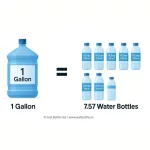


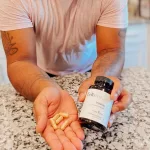



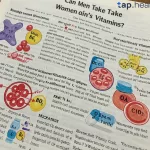
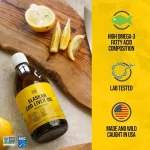

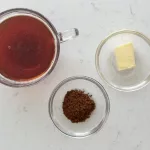
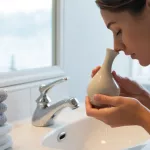
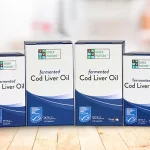
Leave a Reply
You must be logged in to post a comment.